Schroeder Center for Health Policy Hosts Dr. Doug Staiger
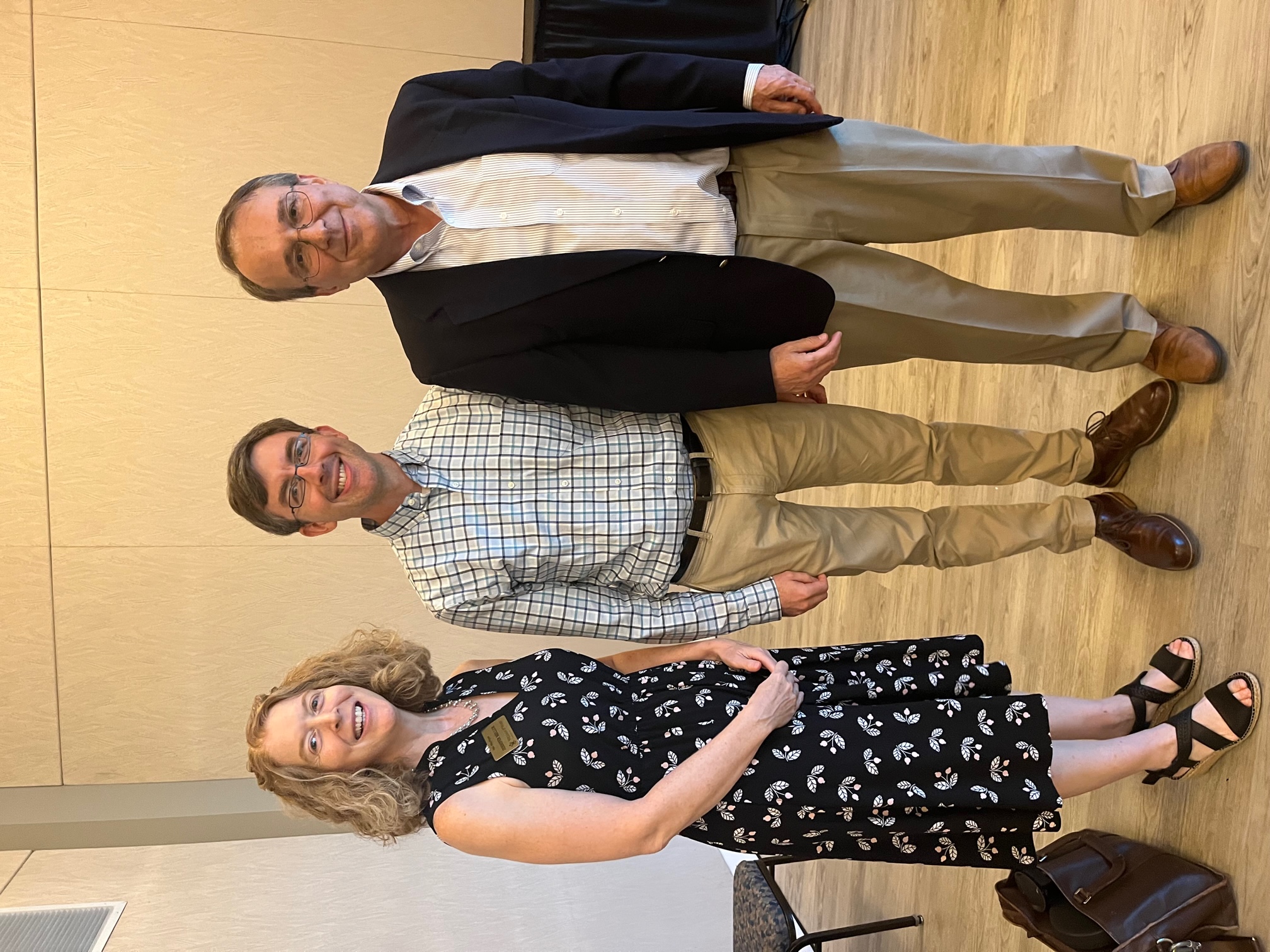 On October 2nd, the Schroeder Center for Health Policy hosted with W&M Economics the second of three panels, "Strengthening the Current and Future Nursing Workforce," to continue celebrating its 20th anniversary. Moderated by Jen Mellor, Paul R. Verkuil Professor of Economics and Director of the Schroeder Center for Health Policy, John Powers ‘25 introduced Dr. Doug Staiger, a renowned public health labor and policy scholar, who recently testified before the U.S. Senate Committee on Health, Education, Labor & Pensions on the U.S. nursing shortage and its effects. Moreover, Dr. Staiger is the John Sloan Dickey Third Century Professor in Economics at Dartmouth College, a Research
On October 2nd, the Schroeder Center for Health Policy hosted with W&M Economics the second of three panels, "Strengthening the Current and Future Nursing Workforce," to continue celebrating its 20th anniversary. Moderated by Jen Mellor, Paul R. Verkuil Professor of Economics and Director of the Schroeder Center for Health Policy, John Powers ‘25 introduced Dr. Doug Staiger, a renowned public health labor and policy scholar, who recently testified before the U.S. Senate Committee on Health, Education, Labor & Pensions on the U.S. nursing shortage and its effects. Moreover, Dr. Staiger is the John Sloan Dickey Third Century Professor in Economics at Dartmouth College, a Research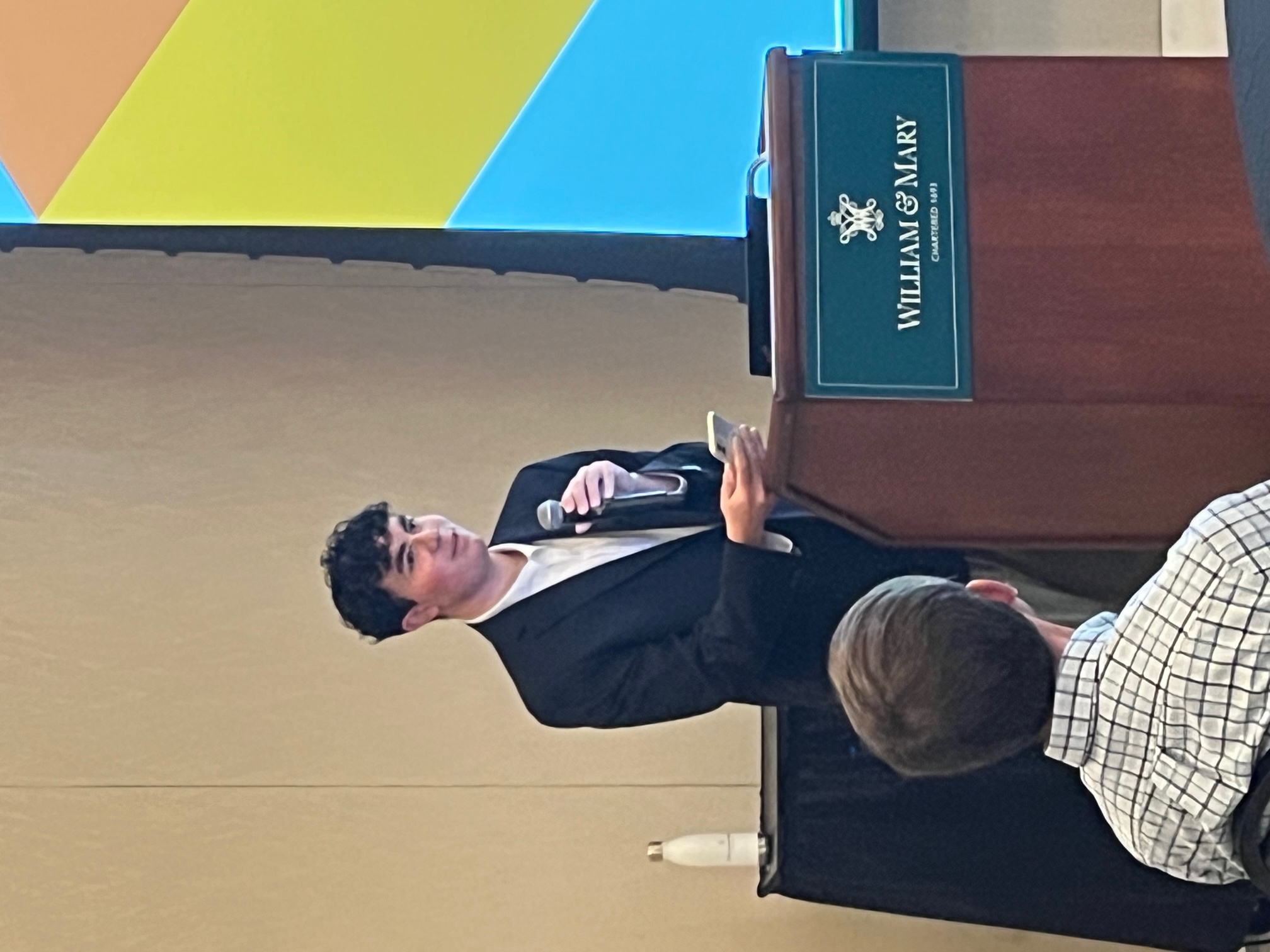
Before addressing the current issues and trends at hand, Dr. Staiger demonstrated the importance of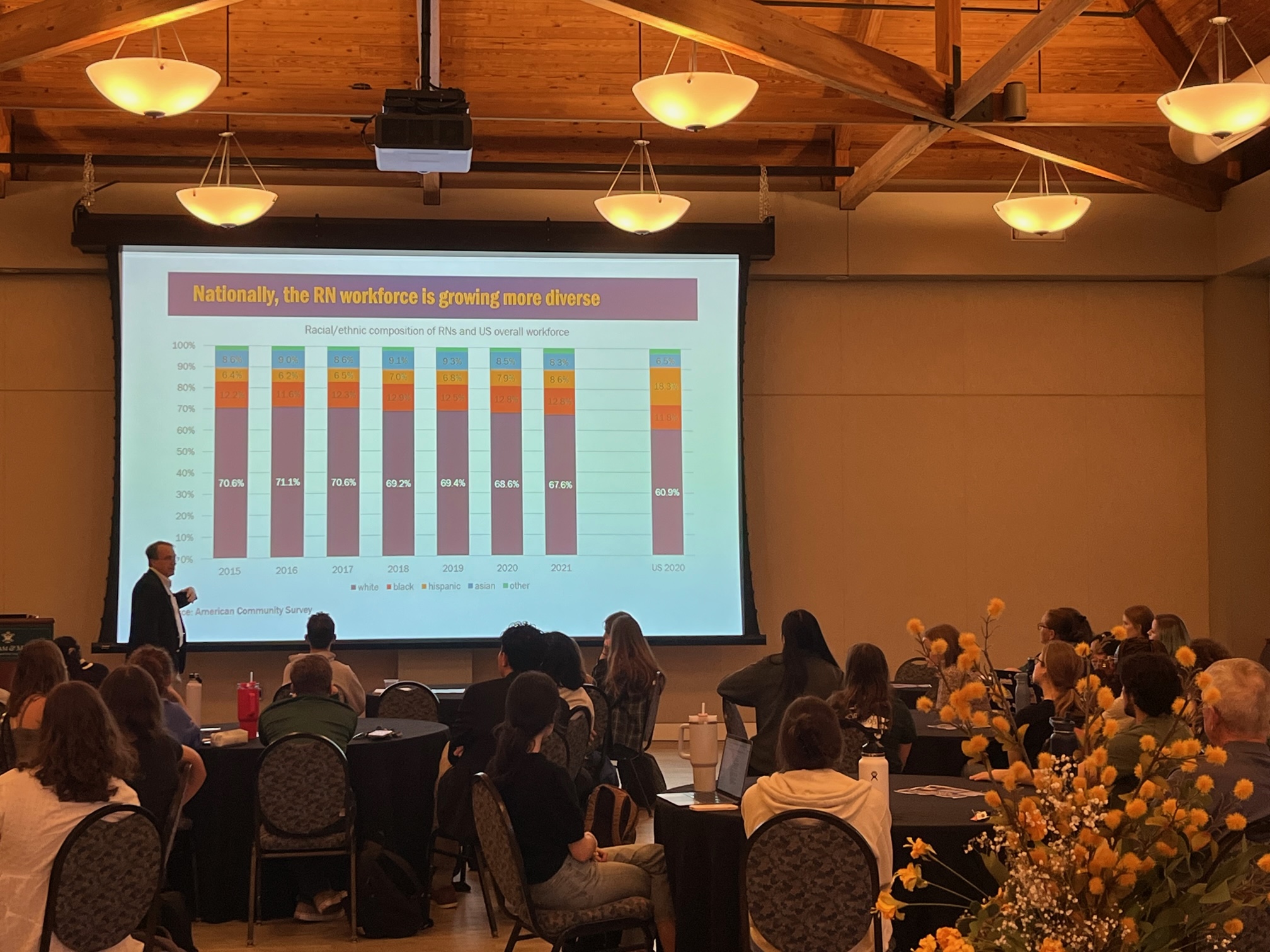 clear methodology and documentation when dealing with large data. Synthesizing massive datasets taken from surveys such as CPS, ACS, NSSRN, and Gallup as well as administrative data sets such as IPEDS, AMA, AAMC, AACN, NCSBN to create a nursing workforce forecast, Dr. Staiger concluded in 2000 that the United States would face nursing shortages due to an aging workforce, an increased demand, a lack of entering nurses, and retirements. Noting that the percentage of nurses over the age of 50 increased from 17.4% in 1984 to 37.7% in 2014, Dr. Staiger accurately predicted the decline of the nursing workforce in the mid-2010’s.
clear methodology and documentation when dealing with large data. Synthesizing massive datasets taken from surveys such as CPS, ACS, NSSRN, and Gallup as well as administrative data sets such as IPEDS, AMA, AAMC, AACN, NCSBN to create a nursing workforce forecast, Dr. Staiger concluded in 2000 that the United States would face nursing shortages due to an aging workforce, an increased demand, a lack of entering nurses, and retirements. Noting that the percentage of nurses over the age of 50 increased from 17.4% in 1984 to 37.7% in 2014, Dr. Staiger accurately predicted the decline of the nursing workforce in the mid-2010’s.
Having developed an accurate and detailed history of the nursing workforce, Dr. Staiger moved to identifying recent trends, problems, and concerns in today’s workforce, beginning with a discussion of demographics. Though the nursing workforce faced a decline in the mid-2010’s due to an aging workforce, Dr. Staiger emphasized that the number of nurses entering the field since 2000 exceeded retirement by 1 million. Most notably, the number of nurses from underserved and underrepresented populations such as the Hispanic community increased greatly creating a valuable and diverse workforce equipped to handle historically underserved populations, areas, and individuals.. Moving forward, these nurses will have a valuable skill set to treat increasingly diverse demographics.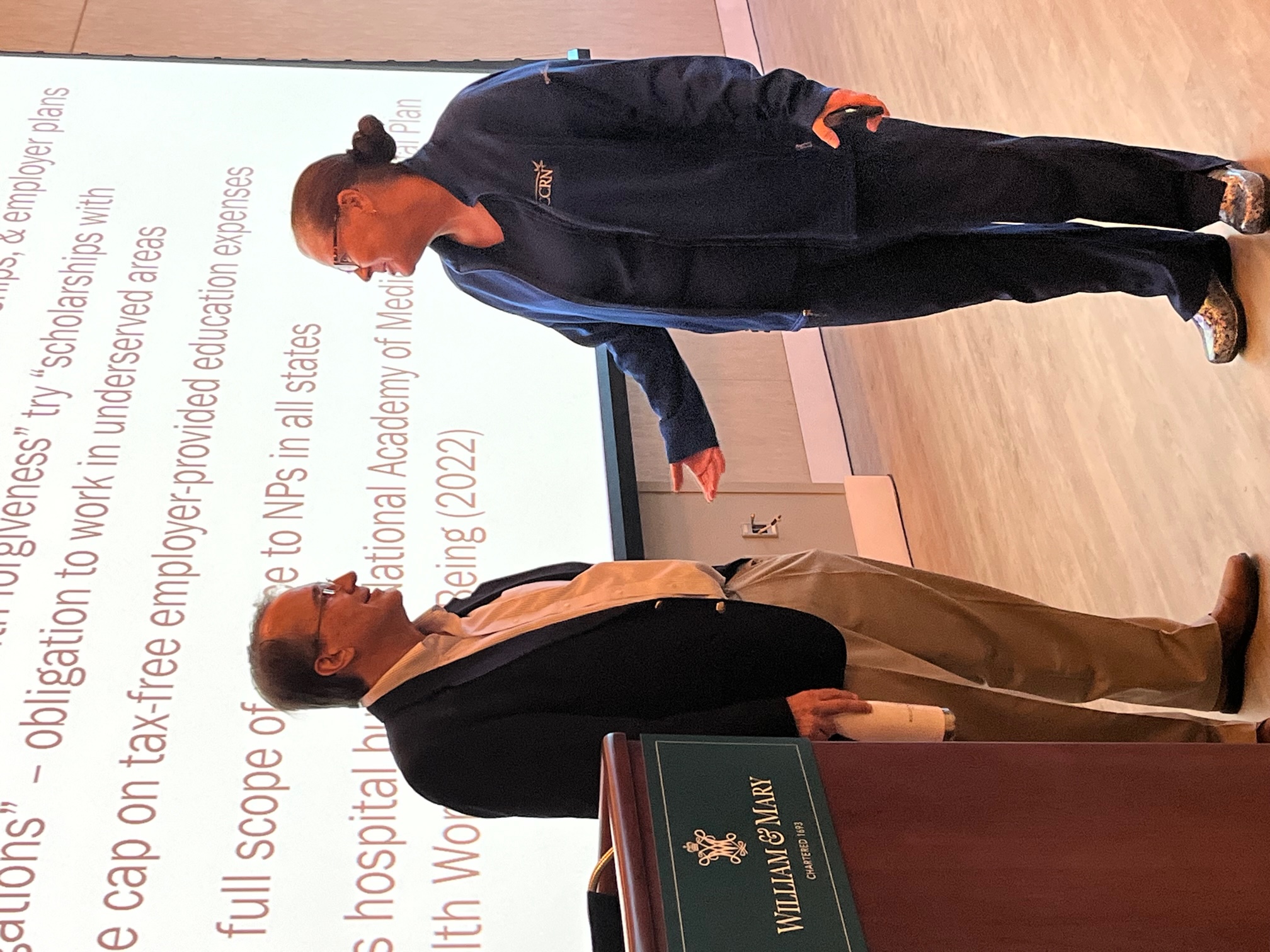
Though Dr. Staiger admired the increasingly diverse workforce, he emphasized the shortage of nurses in rural communities and criticized laws and policies that limit nurse practitioners’ scope of practice. While many nurses are entering the workforce, far fewer are accepting positions in rural communities likely due to the shortage of medical healthcare professionals in the area. Moreover, many states have laws and policies that limit the scope of practice for nurse practitioners. These limitations include the inability to prescribe medication, to diagnose patients, and to operate a practice outside a doctor’s office. Consequently, in many rural areas, patients must find a doctor to prescribe and treat symptoms rather than a nurse practitioner. In rural areas where doctors are scarce, nurse practitioners could help fill the shortage if these laws and policies were relaxed. Where doctors are scarce, nurse practitioners are an underused resource limited by state law and policy.
Though Dr. Staiger highlighted current issues in the nursing workforce, the nursing profession’s future is bright. COVID undoubtedly set back the profession causing numbers to drop in 2021, but Dr. Staiger emphasized that the numbers rebounded in 2022 with a majority of nurses being under the age of 35. Moreover, Dr. Staiger’s projections predict that the 1990’s cohort will supply twice as many registered nurses than the 1970’s cohort. Between rising numbers and a larger incoming cohort, an estimated 1.2 million nurses will join the workforce by 2035. While these numbers are impressive and reflect a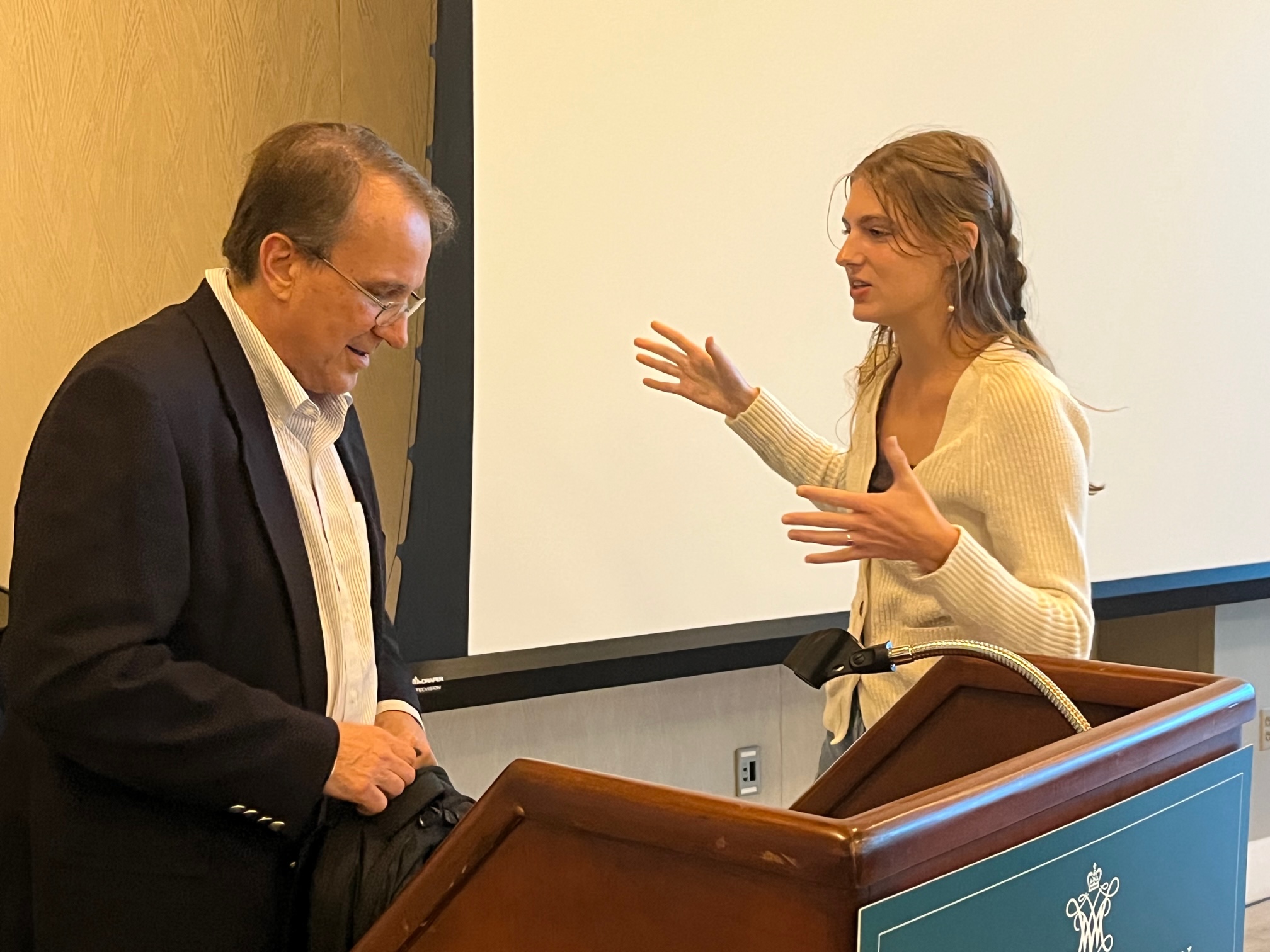 growing interest in nursing among young adults, Dr. Staiger suggested further policy actions such as booster programs for new students affected by the pandemic, relaxing scholarship and employment plan restrictions, raising the cap on tax-free employer-provided education, expanding the scope of practice for nurse practitioners, and addressing hospital burnout could further increase the growth and retention of nurses especially in underserved areas.
growing interest in nursing among young adults, Dr. Staiger suggested further policy actions such as booster programs for new students affected by the pandemic, relaxing scholarship and employment plan restrictions, raising the cap on tax-free employer-provided education, expanding the scope of practice for nurse practitioners, and addressing hospital burnout could further increase the growth and retention of nurses especially in underserved areas.
For students interested about the labor market for healthcare professionals or healthcare in general, the Schroeder Center for Health Policy alongside W&M Sociology will be hosting Dr. Jeanne Batalova, Senior Policy Analyst at the Migration Policy Institute, for a talk on “The Role of Immigrants in the U.S. Healthcare Workforce” in the Sadler Center (Tidewater B) at 4:30. Be sure to register here (https://events.wm.edu/event/view/schroedercenter/353032).














